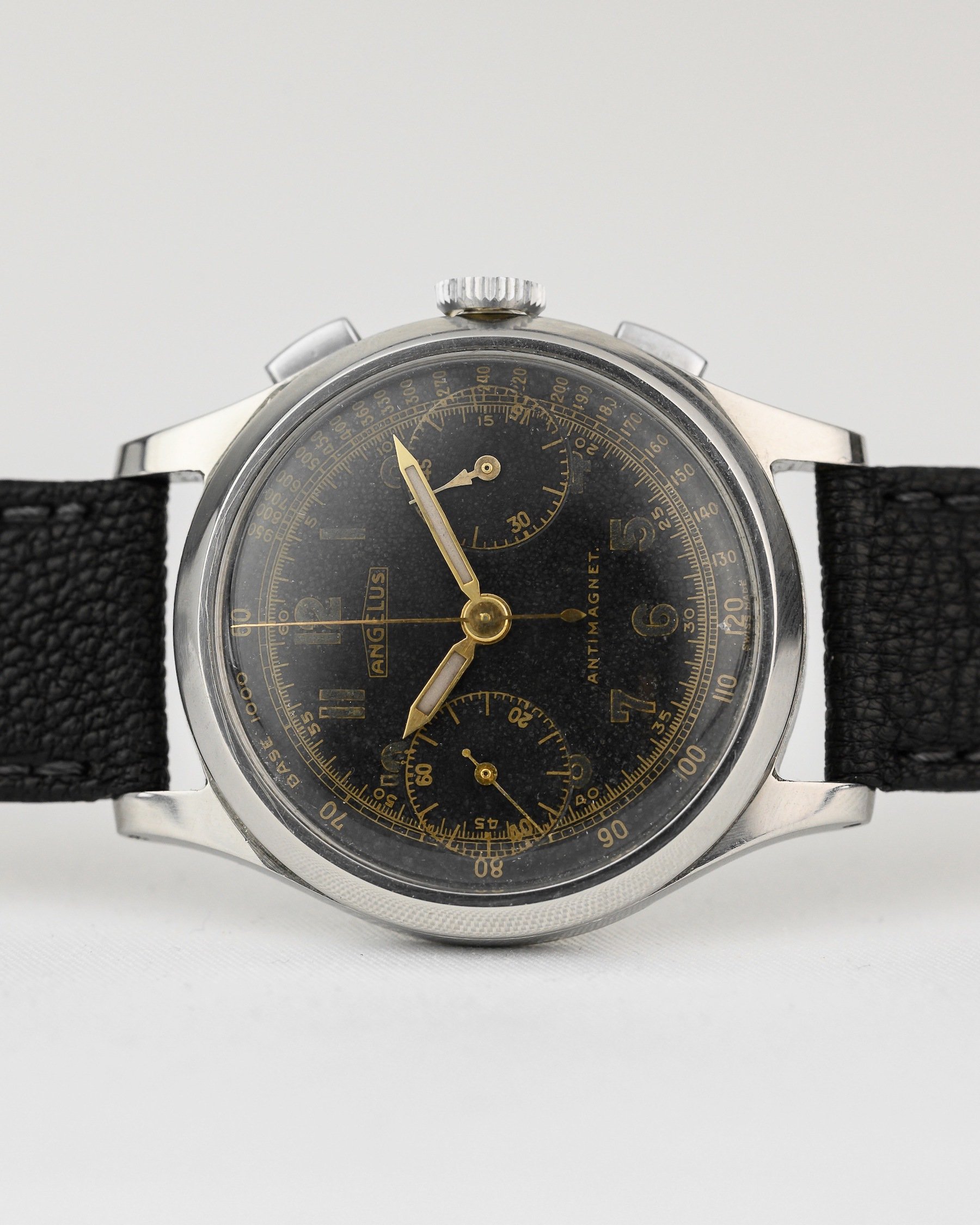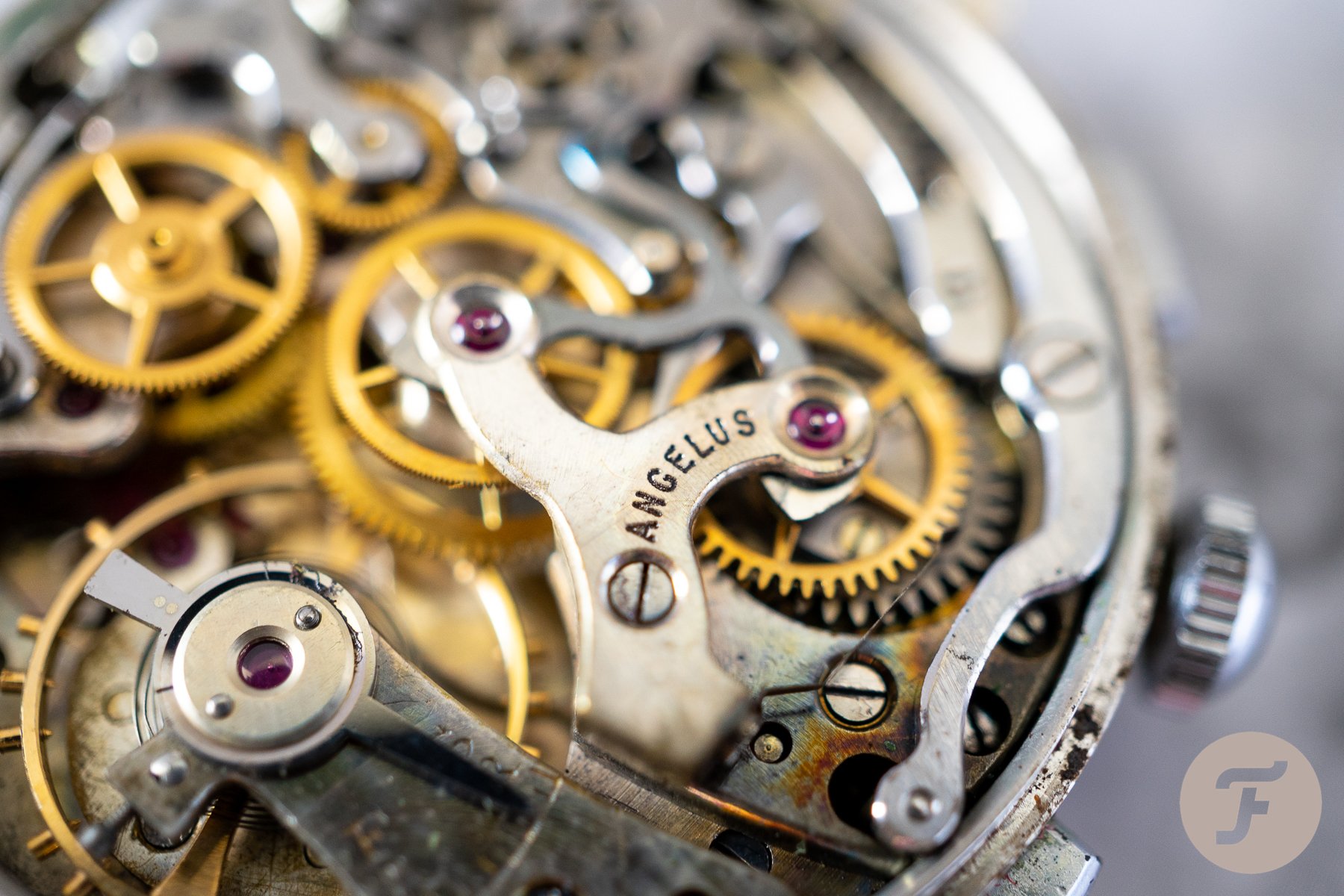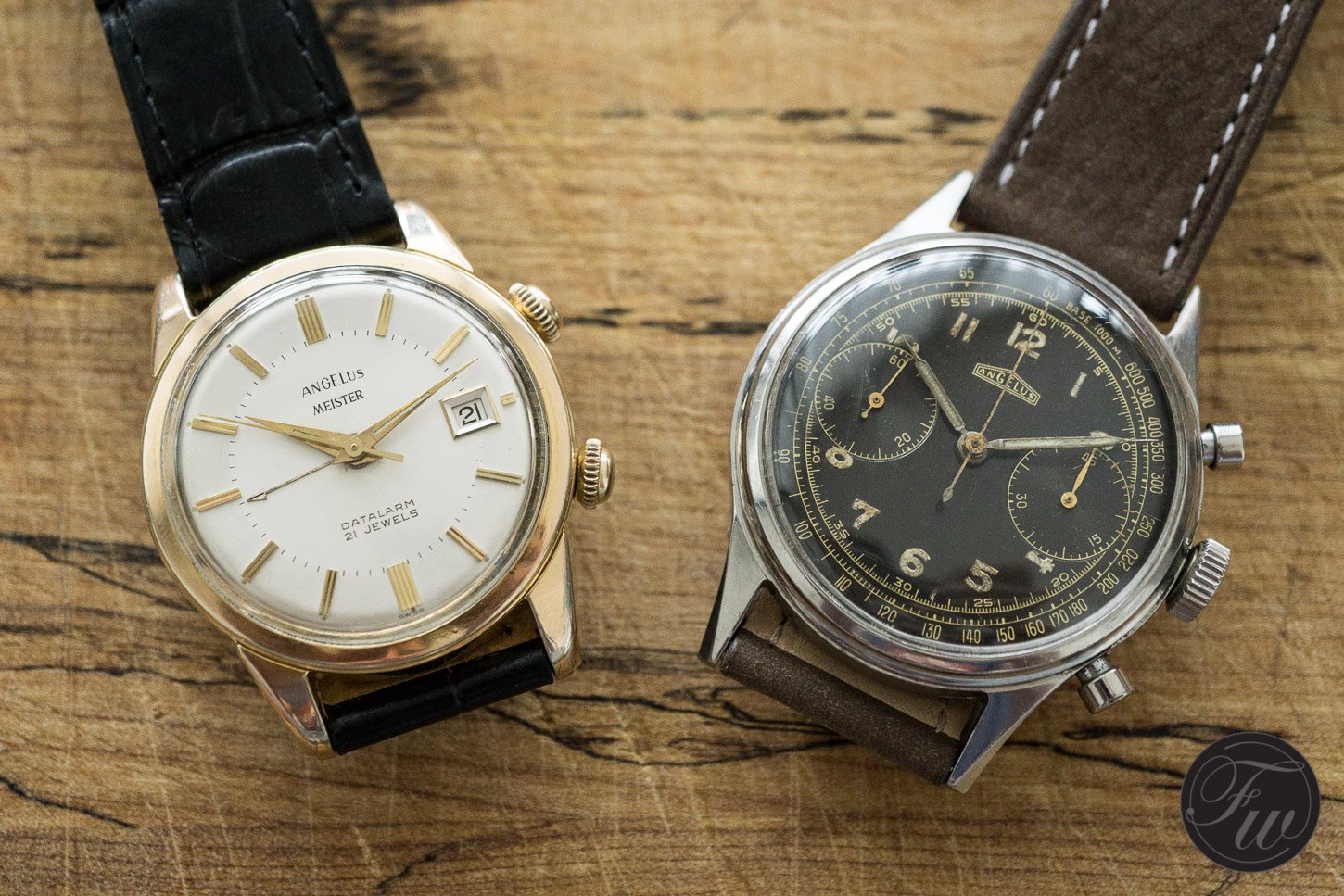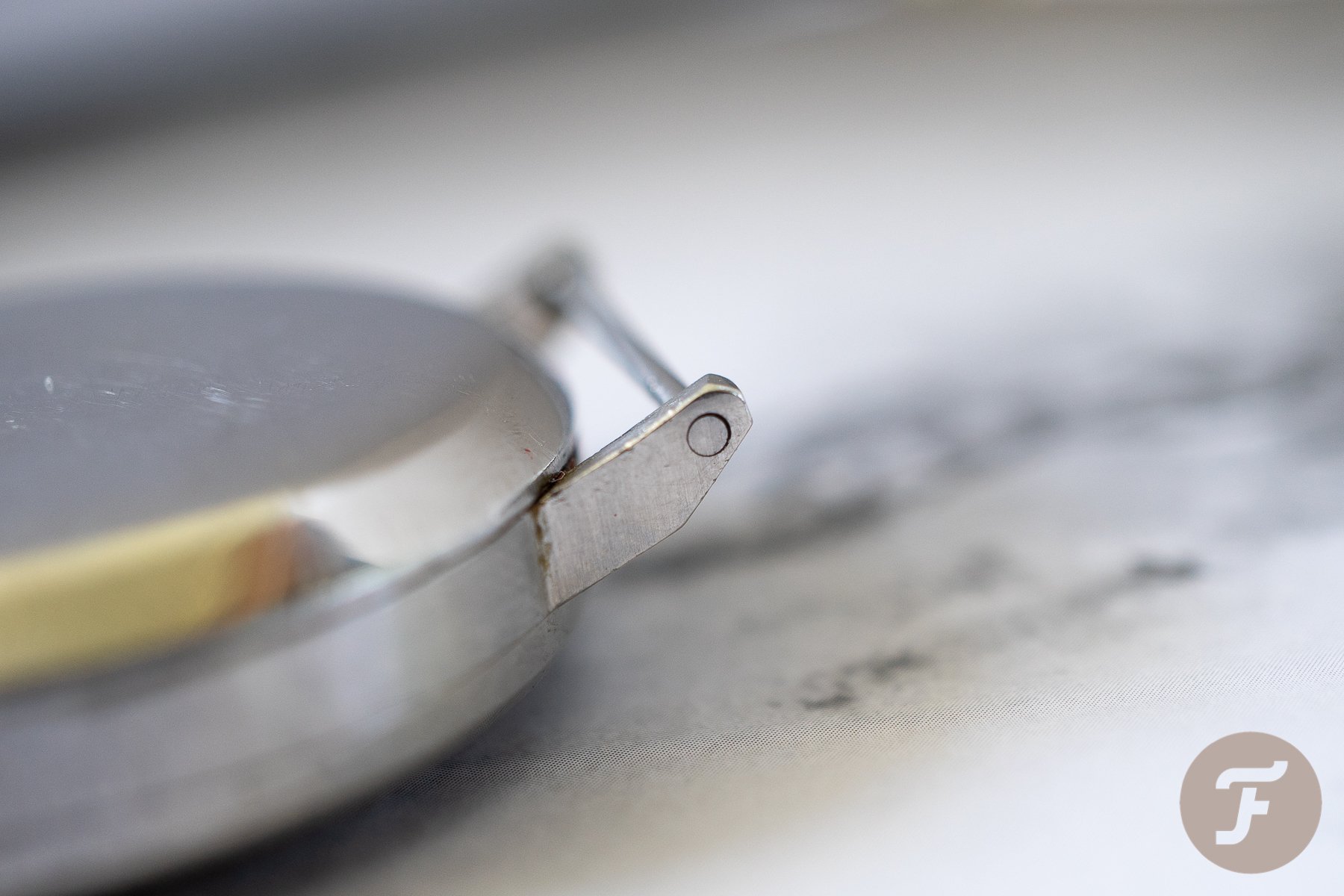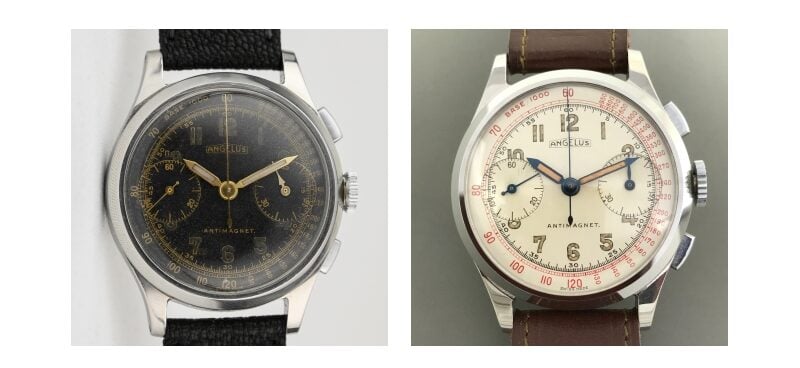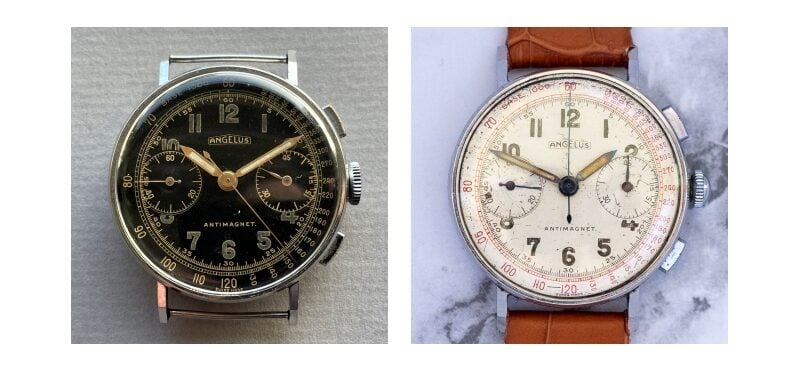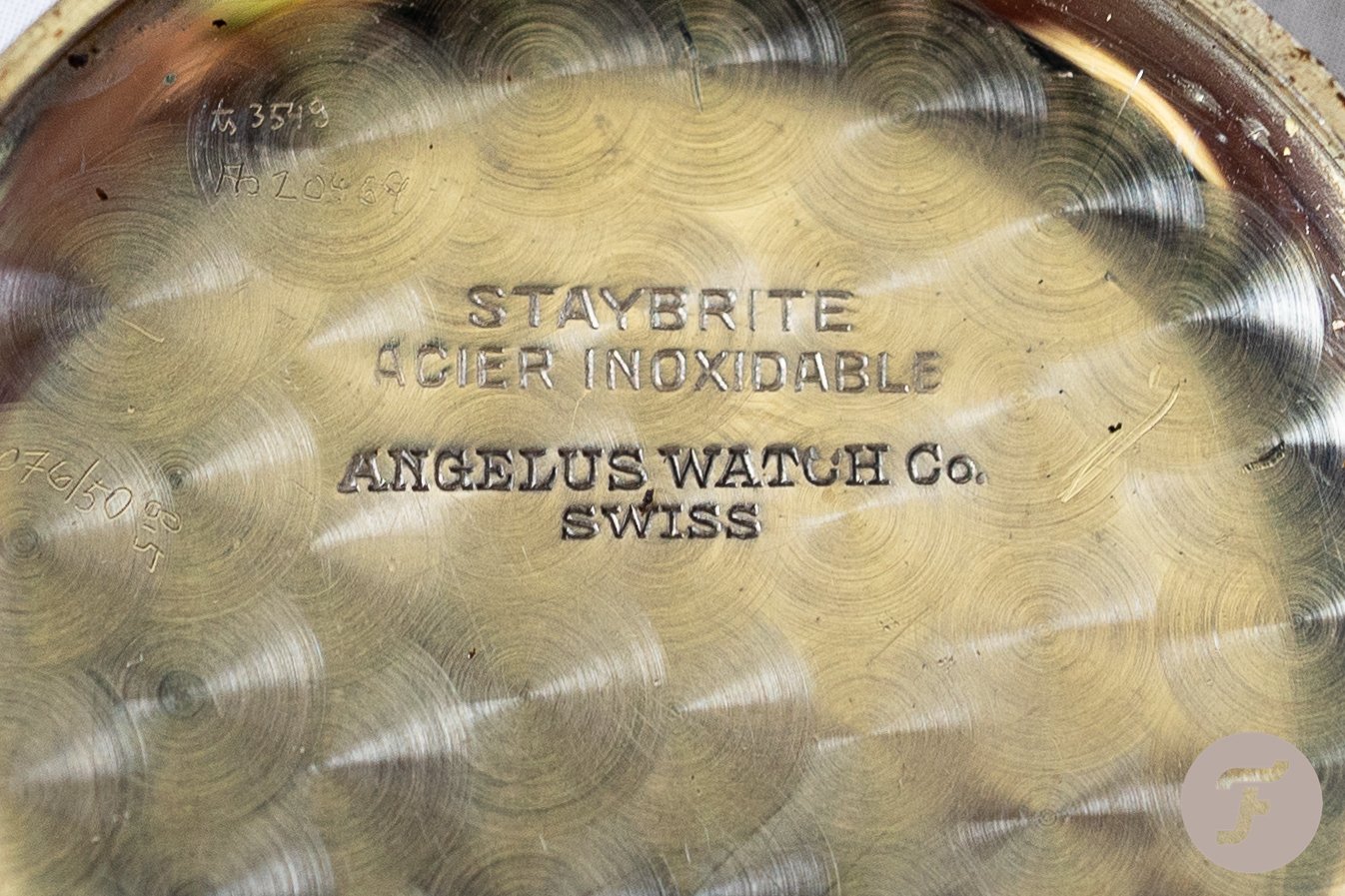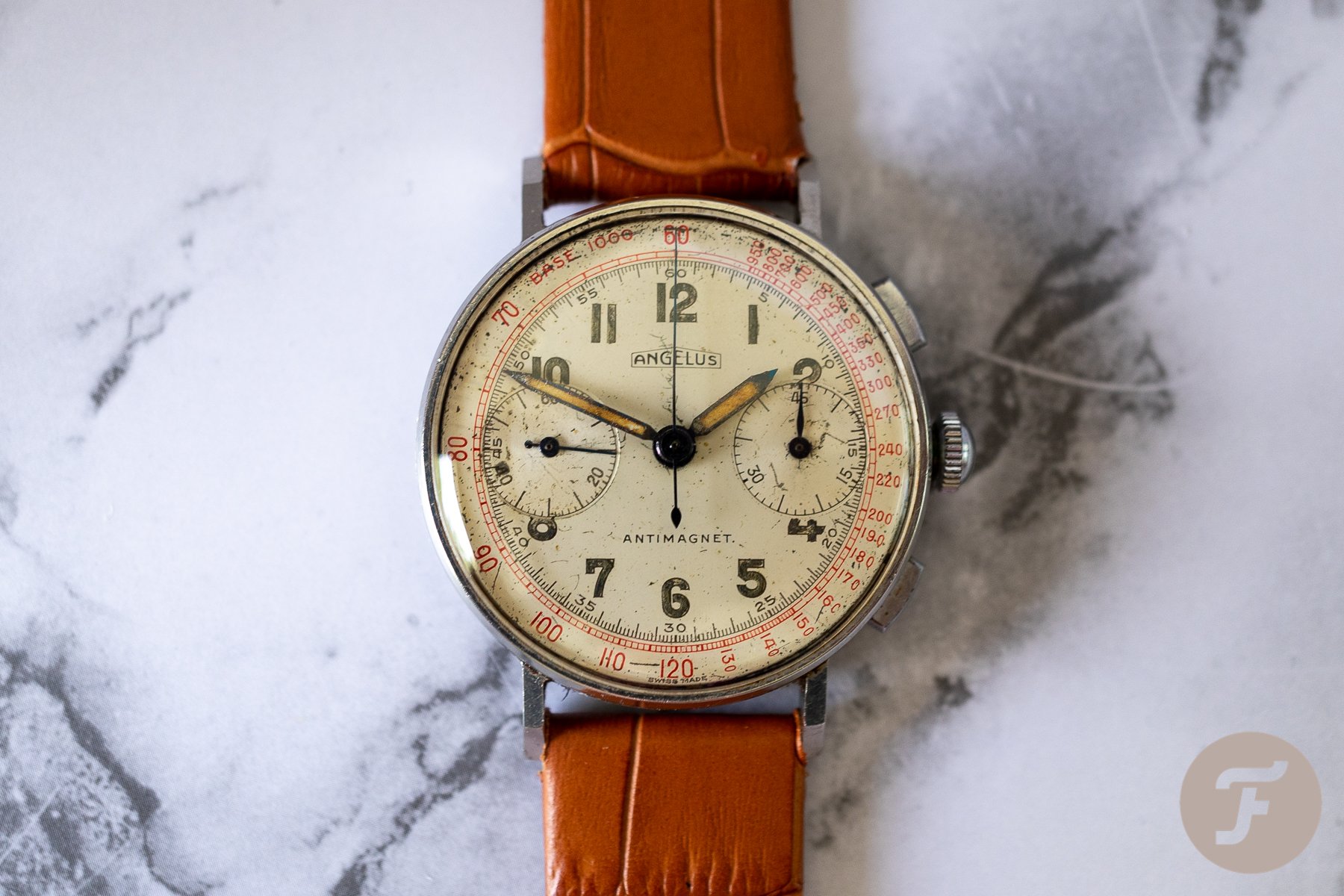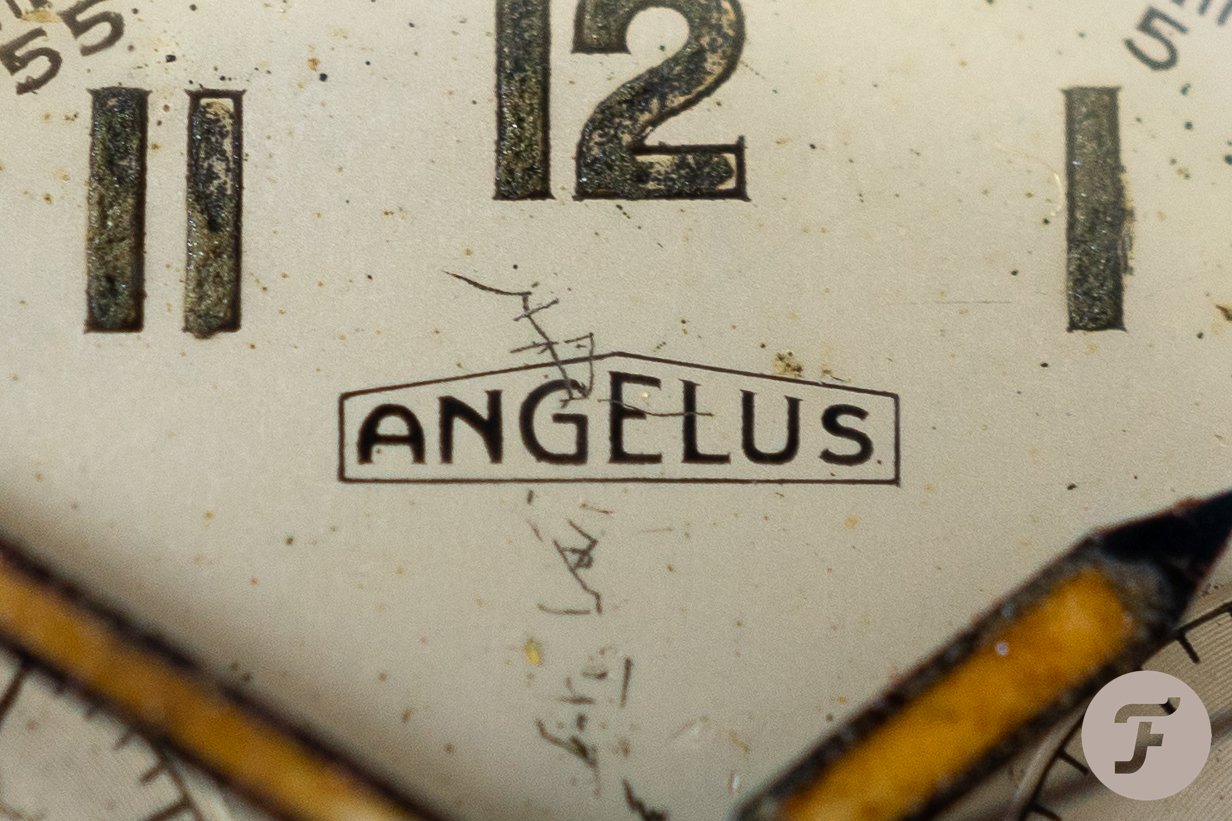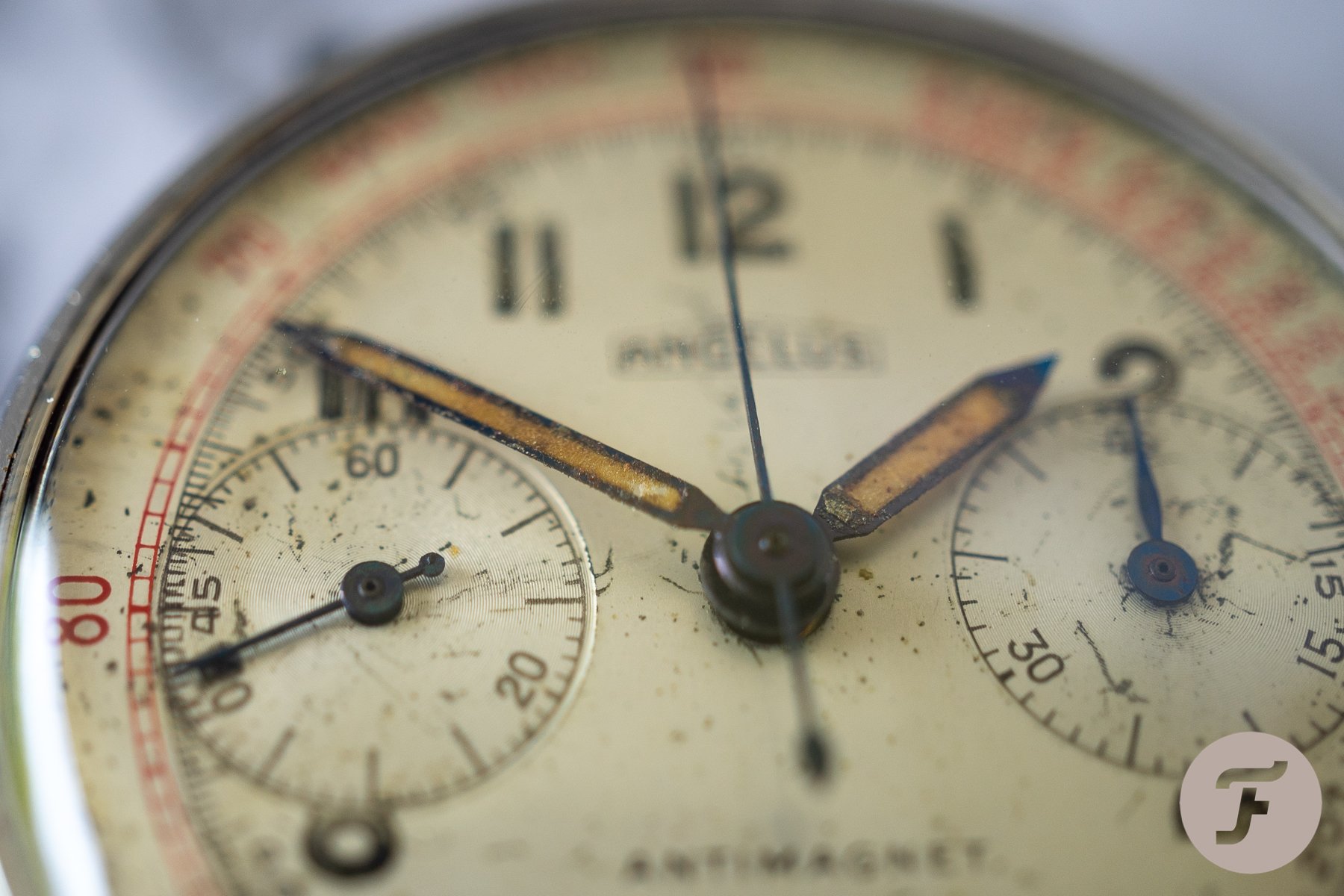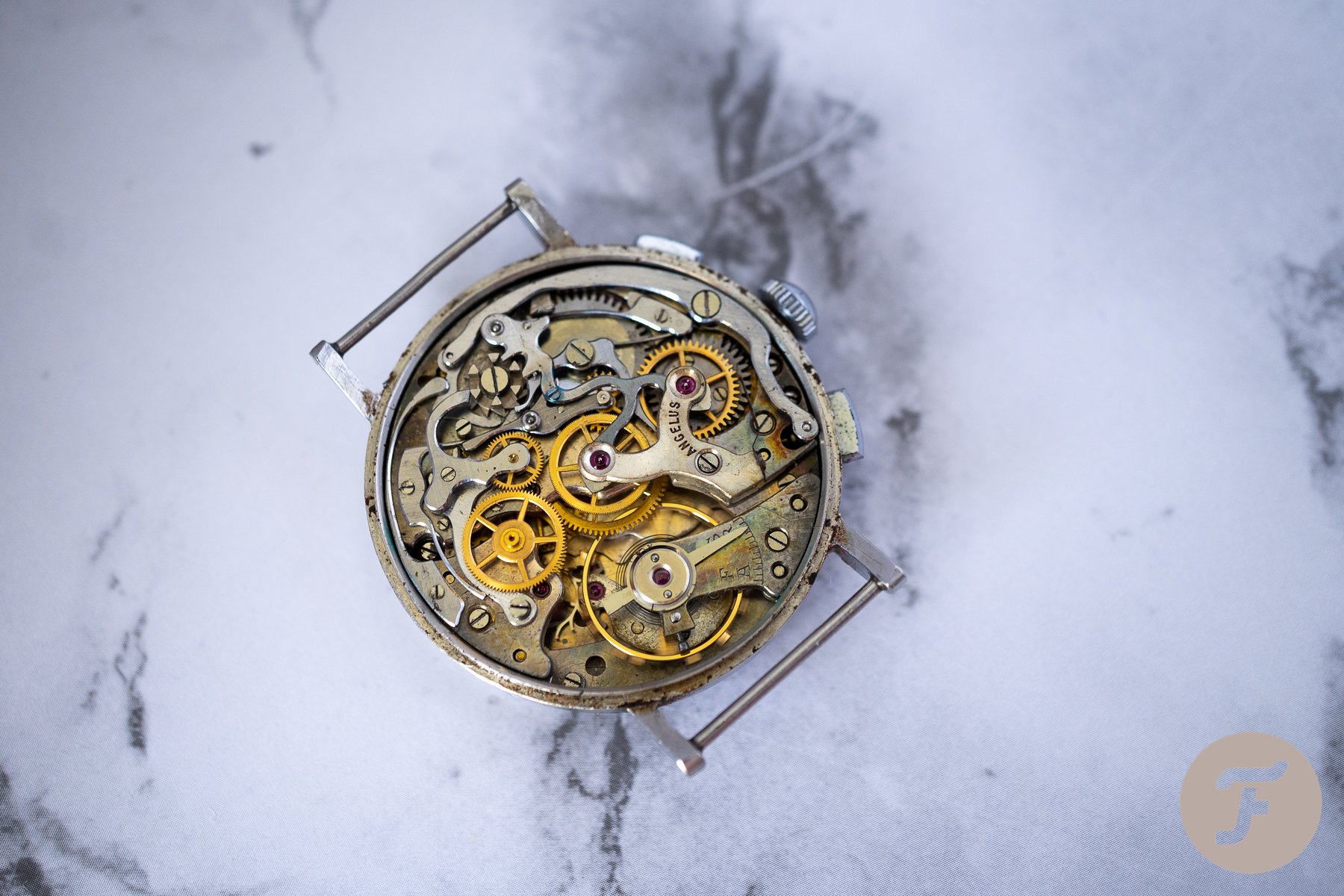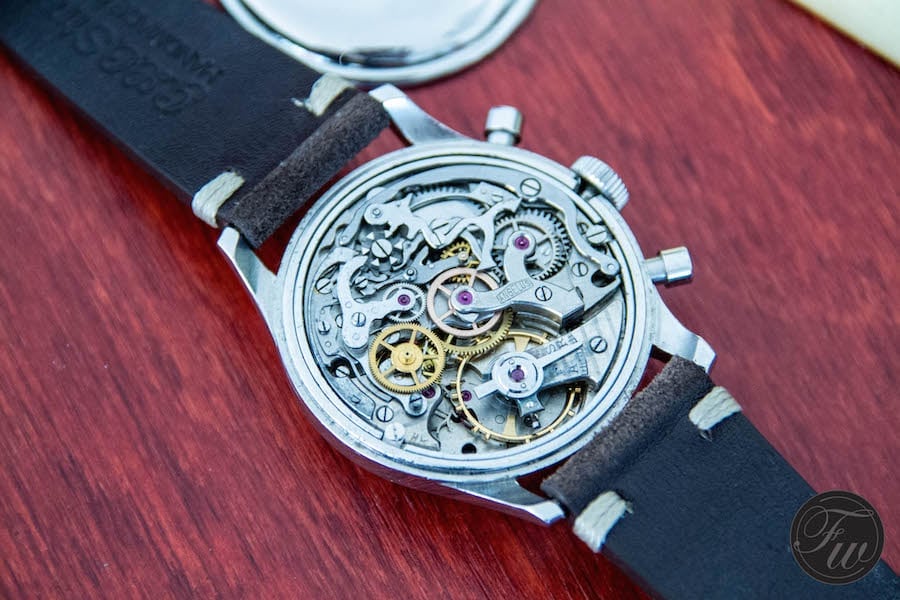Vintage Angelus 210 Chronograph Collector’s Guide
My love for Angelus watches is well documented. In the past, I’ve featured many models on these very pages. From the Chronodato and the Holy Trinity to collector’s guides on military 215s, the articles I wrote for your (and my) entertainment span a wide variety of models. Angelus is a fascinating brand and has much to offer for a vintage guy like me.
Though arguably, those models are some of the coolest ones out there, Angelus has much more than a few military pieces or a triple-date chronograph. To name a few, the Dato12, 25x calibers, or those awesome travel clocks and other timepieces are all part of the Angelus family. In this article, I want to talk about another type of watch — the Angelus 210. And I hereby dub this the Angelus “Minichrono”.
The Angelus Minichronos
I nicknamed these models when I initially started my research. Why Minichrono? Well, they are chronographs, just like the 215, but the case is much smaller and slimmer, so it was logical (at least to me). It’s worth mentioning that some 25X-caliber watches that came later had even smaller case dimensions. I’m strictly comparing the size of these 210 chronographs to the 38mm Angelus 215s. In this article, I’ll try to sum up everything I know about these Angelus timepieces, but it’s worth pointing out that this is only the result of my research, and nothing is carved in stone. Also, I need to mention that there are other Angelus watches with the caliber 210. Today, I’m focusing on these four types of examples that share common features.
Research background
Though perhaps we shouldn’t, we tend to believe everything we read in watch magazines and on the internet for a reason. Editors often have access to information the average watch fan does not. Furthermore, over the years, we have gained experience or friendships with collectors and industry experts who might give us valuable information on a particular topic. These are crucial attributes in a project like mine. Still, nothing can substitute leg work and doing one’s own research. For that, I took my time and collected as much information as possible on these timepieces. I looked up old listings on eBay, watch forum sales corners, and auction results. My aim was to collect as much detail and insight as I could. I also read many forum posts, looked up books discussing these watches, and spoke to some of the most noted collectors on this topic.
Lastly, I collected and systematized my findings (over 60 examples) in an Excel sheet highlighting the most notable and common features of every watch I could find. Slowly, a pattern started to emerge. Again, I must stress that this article represents my findings. As such, it may not be 100% accurate. I do not say that this is precisely how, why, and in what order these watches went into production. We all know that manufacturing back in those days was far from controlled. But numbers don’t lie, and if a pattern develops, I tend to believe that it does so for a reason. That said, I’d still like to ask you to keep the above in mind when reading my article on the Angelus 210 Minichronos.
Time period
First and foremost, we need to establish the period in which these 210 Minichronos could have been produced. We have several ways to do that. As always, my dear colleague Christoph Öhm-Kühnle’s Angelus Collector’s Guide is the starting reference. From this publication, we know that Angelus released the caliber 210 around 1935. Let this be the date we have to work from to narrow the period. Another way to establish some form of timeframe would be by comparing serial numbers.
The earliest example I could find had a serial number starting with 182XXX, and the latest would begin with 196XXX. There is a rough chart of serials in the Angelus Collector’s Guide (168174 to 216526: ca. 1935 to ca. 1942 ). We can see that the production/release of the Minichronos falls between the second half of the 1930s and the early 1940s. Great! Now we can move on from 1935 toward 1940 or so.
A timeline is set
Finally, we should examine the stylistic elements of these watches. Let’s start with the logos. Again, I have to use the guide to help me with that. I reviewed some of the earliest and latest examples in my database, and all of them have the same type of logo. It is what the guide calls Type D2-1st Version. “D2. Simple frame. Letters in Art déco font (roundish A and curvy middle line in the N) with uniform line thickness. The middle line in the “E” is placed visibly above the letter’s middle. The upper line in the “E” is bent downwards… D2 was used on very few late watches with caliber 210… Appearing in ads in 1941 and 1942, possibly used longer.”
To sum it up, after having examined the logo, the serials, and the information we have on the movement, we can establish that the Angelus 210 Minichrono watches probably came to the market in the very early 1940s. It would have been helpful to find a watch with a case-back inscription. These often contain dates that come in handy when trying to place said timepiece within a period. None of the examples I came across in my research had an inscribed case back, though. Keep in mind that a few years after the caliber 210, the legendary Angelus caliber 215 also went into production. The manufacturing of the two ran concurrently for a while. Around the mid-1940s, however, a whole new caliber family, the 25X, hit the market. From there, the 21X movements were slowly phased out.
Types of cases
Now that we know the period, let’s move on to the Minichronos’ external features, starting with the case. The first notable feature is the fixed spring bars. For whatever reason, these models came with fixed (welded) spring bars. However, the cases originally had drilled lug holes. You can see the filled-up holes on every case.
In some instances, I presume that watchmakers converted them to drilled lugs again at a later stage. You can clip off the spring bars and drill the holes back where they had originally been. After that, you can use a regular spring bar and whatever strap you like. Over 85% of the watches in the database have welded lugs, wheras just a few have drilled-out lug holes.
The other important feature is the case shape. The 210 Minichronos came in two cases. I called them thin- and thick-lug versions. The thin-lug versions are approximately 35mm wide and 42mm from lug tip to lug tip. On the other hand, the thick-lug versions are a bit larger, around 36mm with a similar lug-tip-to-lug-tip measurement. The thin-lug watches have slimmer bezels and lugs, whereas the thick-lug versions had short, thick lugs and broader bezels. The back is press-in, not screw-in, and has no external markings in both cases. In terms of numbers, my database has about 55% thick- and 45% thin-lug versions. Until the mid-189XXX serials, most of my findings (99%) had thin lugs. Thick lugs only start to pop up more frequently in my database from around 1893XX onwards — a coincidence, perhaps, but worth noting nonetheless.
Inscriptions
We always find the inscriptions from the brand and the serial number inside the case backs. Minichronos falling in the 185XXX and 186XXX serial range usually have the following inscription: “Staybrite, Acier Inoxidable, Angelus Watch Co., Swiss“. Below this is usually the six-digit serial number. However, from the 187XXX serials, the text changes to “Angelus Watch Co., Swiss, Acier Inox“. Every watch until 189XXX has this text. Around that serial batch, however, it switches back to the first version. It continues like this until the 193XXX serial batch, where the shorter text appears once again. There is no significance behind this, but look for this feature to date your watch. Although some watches might have different inscriptions, I only found one or two deviations.
Dial types
One of the essential features of a watch is its dial. The Angelus 210 Minichronos came in two dial colors — black and white. Luckily, most of the elements on the dials are the same regardless of the colors. As previously mentioned, every example I found used the D2-1st version of the Angelus logo. You can easily recognize this logo with the downward-bending top of the “E” in the middle of Angelus. Speaking of which, the logo is just below the 12, and the word “Antimagnet.” is above the 6. For the hour markers, we have a mixture of fully visible (1, 5, 6, 7, 11, 12) and partially visible (2, 4, 8, 10) Arabic numerals which are covered in radium. Furthermore, the 3-o’clock sub-dial has a 45-minute register with the numerals 15, 30, and 45. Meanwhile, the 9-o’clock sub-dial is for the running seconds with numerals 20, 40, and 60.
Through the 188XXX serials, the dial design is identical. Watches with 189XXX or higher serials, however, are a tad different. On those, the sub-dials cut more into the index numerals, so the bottom of the 4 or the 8 is barely visible. The logo, however, is still the same, and so is the chronograph scale. Every Minichrono I examined had a tachymeter scale printed on the dial’s outer rim. Much of the printing is black on the white-dial watches, and the tachymeter is printed in red. On the black-dial version, all of the printing is gold-tone. According to my numbers, 79% of the watches had black dials, and only 21% had white dials. So, it’s safe to assume that white-dial Minichronos are rarer than the black ones.
Hands
Since the calibers 210 and 215 are more or less identical, the interchangeability of parts is quite simple. This is bad for us, though, since parts from a later watch could be added to a 210 Minichrono. Sadly, this also goes for the hands. During my research, I have seen watches with hands from 215s, leaf hands, or even gold ones. As far as I can tell, the Minichronos came with only one hand shape in two colors/materials. They used pencil-shaped hands very similar to what we see on Angelus 215 military watches. However, both hands on the Minichronos are shorter and broader, particularly the hour hand. White-dial watches had blued steel hands, while black-dial watches had gold hands. In both cases, the running seconds hands were stick-shaped, and the 45-minute sub-dial had a small leaf-shaped hand. The counterweight on the chronograph seconds hand is leaf-shaped as well.
As a side note, you sometimes find Minichronos with sword hands. I believe early examples in a small batch came with such hands. The case is the thin-lug version, and the dial is similar too. The hands are the only different characteristic. I’ve only seen a handful of those to date.
210 or 215
Contrary to many misleading advertisements, the watches I’m talking about did not house Angelus 215 calibers. Instead, they came with the Angelus caliber 210. In my database, I collected over 60 examples, out of which only two or three had the 215 inside, and that wasn’t the only questionable feature of said watches. Hence, I can certainly say that any Minichrono with a 215 caliber is a put-together or at least one with a changed movement. Due to their similarities in size and function, it is possible to take a Minichrono case and use a loose 215 movement in it with some mismatched hands. If you are looking for a truly original Minichrono, however, you must look for an example with a caliber 210 inside.
Another critical factor is the bridge marking. The most common Angelus bridge marking is the single-frame logo. Nevertheless, this is not what the Minichrono calibers have. The earliest Angelus examples had unmarked bridges. Possibly the first type of marking you can find on Angelus chronographs is the same that the subject of this article also possesses. These have “Angelus” written in an arc shape on the bridge. The text runs from the screw to the right arm of the bridge. It is plausible that a Minichrono left the factory with an unmarked bridge, of course. Still, all of the examples from my list all have the same marking.
What’s left to say?
Many vintage watch nerds might ask an essential question: “Well, how much do these go for?” Price is a relative subject, and it can get outdated pretty soon. We must keep in mind that these outstanding watches are somewhat smaller than the desirable 215 jumbo chronographs (the one from the Holy Trinity). While you might think that the jumbo models are much rarer, I have collected many more examples (serial numbers) in my database for those than for the Minichronos. Still, I think 210 Minichronos should carry a lower price than that of the larger 215 model.
In any case, these are lovely little chronographs with an iconic in-house caliber and a ton of charm. If you own or want to purchase one, I trust this work will allow you to date and check the watch’s originality. If you are reading this for fun, I hope this project managed to teach you something new.
I want to dedicate this article to the late Mr. Christian Pfeiffer-Belli, editor-in-chief of Klassik Uhren Magazine.



